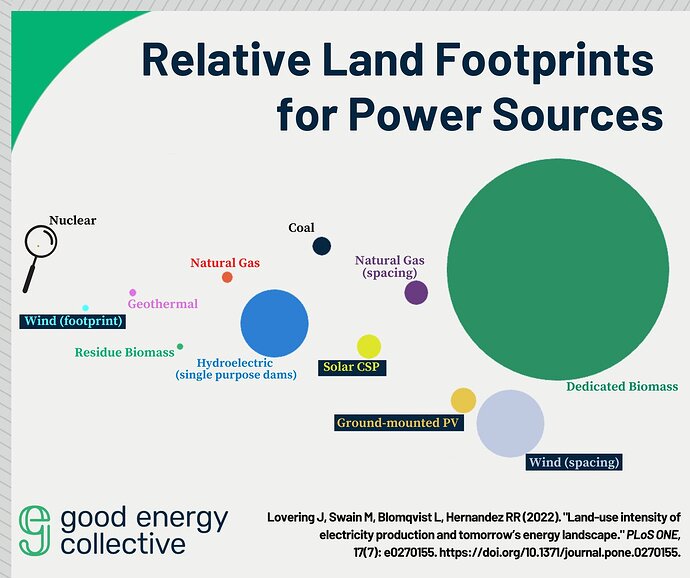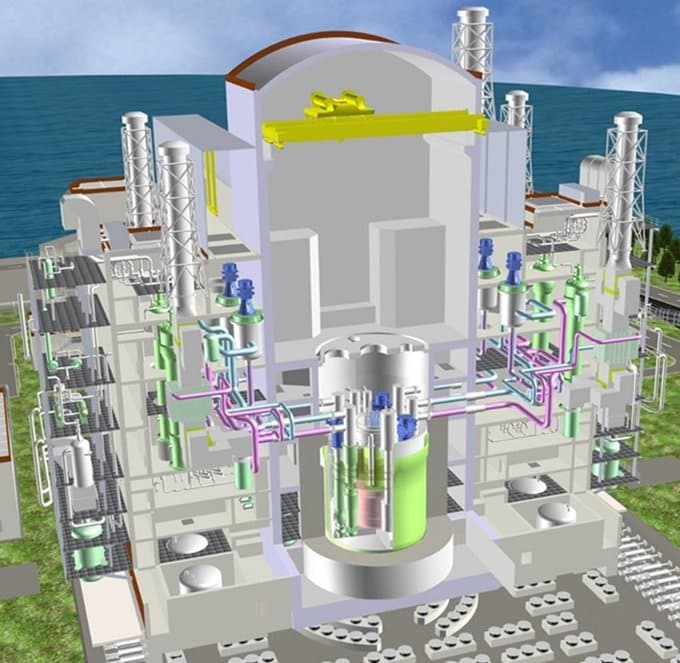As I see it, as part of the globalist agenda, they believe we have it too good. Since they are incapable of elevating those less fortunate (they can’t even do that here - despite spending a score or so trillions of dollars on “anti-poverty” programs since “The Great Society” farce). Elevation of populations is not in the socialist/Marxist repertoire. They can, however, lower our standard of living. That’s my best guess as to why they are bringing us down - especially those of us who have - through merit - enjoyed some success and security.
What better way to rule the world than to burn down all existing institutions (potential competitors) and replace them with institutions under your control? This is the intended result of the WEF’s “great reset,” which is just a massive central planning scheme. Their primary aim, as I see it, is the consolidation of power.
“Better to rule in Hell, than serve in Heaven”
Paradise Lost, John Milton
A new paper in PLOS ONE, “Land-use intensity of electricity production and tomorrow’s energy landscape”, examines the land use requirements of various alternative energy sources. The paper is open access with the full text available at the link or as a PDF file. The results are summarised in the following graphic.
Here is the abstract for the paper.
The global energy system has a relatively small land footprint at present, comprising just 0.4% of ice-free land. This pales in comparison to agricultural land use– 30–38% of ice-free land–yet future low-carbon energy systems that shift to more extensive technologies could dramatically alter landscapes around the globe. The challenge is more acute given the projected doubling of global energy consumption by 2050 and widespread electrification of transportation and industry. Yet unlike greenhouse gas emissions, land use intensity of energy has been rarely studied in a rigorous way. Here we calculate land-use intensity of energy (LUIE) for real-world sites across all major sources of electricity, integrating data from published literature, databases, and original data collection. We find a range of LUIE that span four orders of magnitude, from nuclear with 7.1 ha/TWh/y to dedicated biomass at 58,000 ha/TWh/y. By applying these LUIE results to the future electricity portfolios of ten energy scenarios, we conclude that land use could become a significant constraint on deep decarbonization of the power system, yet low-carbon, land-efficient options are available.
NRC to approve NuScale SMR:
The U.S. Department of Energy published a report on 2022-09-13, “Investigating Benefits and Challenges of Converting Retiring Coal Plants into Nuclear Plants” [PDF, 127 pages]. Here is the abstract.
A coal-to-nuclear (C2N) transition means siting a nuclear reactor at the site of a recently retired coal power plant. Three overarching questions from the C2N transition guide this research: where in the United States are retired coal facilities located and what factors make a site feasible for transition; what factors of technology, cost, and project timeline drive investor economics over such a decision; and how will C2N impact local communities?
The study team evaluated the siting characteristics of recently retired plants and those operating coal-fired power plant sites run by a utility or an independent power producer utilizing publicly available data to screen U.S. coal power plant sites to nuclear-feasible locations. After screening all retired coal sites to a set of 157 potential candidates and screening operating sites to a set of 237 candidates, the study team estimates that 80% of retired and operating coal power plant sites that were evaluated have the basic characteristics needed to be considered amenable to host an advanced nuclear reactor. For the recently retired plant sites evaluated, this represents a capacity potential of 64.8 GWe to be backfit at 125 sites. For the operating plant sites evaluated, this represents a capacity potential of 198.5 GWe to be backfit at 190 sites.
This report evaluates a case study for the detailed impacts and potential outcomes from a C2N transition. Based on the nuclear technology choices and sizes evaluated to replace a large coal plant of 1,200 MWe generation capacity at the case study site, nuclear overnight costs of capital could decrease by 15% to 35% when compared to a greenfield construction project, through the reuse of infrastructure from the coal facility. Nuclear replacement designs can have a lower capacity size because nuclear power plants run at higher capacity factors than coal power plants. In the case study replacing coal capacity with 924 MWe of nuclear capacity, the study team found regional economic activity could increase by as much as $275 million and add 650 new, permanent jobs to the region of analysis.
The evaluated site choice in the report is hypothetical for analysis purposes only and based on available data and documented assumptions. Consequently, the findings only inform at a general level. A community, investor, or other interested stakeholder can use these results to set up a detailed, in-depth analysis for a specific application of interest, such as evaluating a C2N transition of a specific coal power plant and a specific nuclear technology design. The report was subjected to independent peer reviews by experts in systems engineering and regional economic modeling to evaluate analysis and assumptions.
Poland makes a move:
Site is on the Baltic:
Westinghouse is trying to block Korean sales of Westinghouse-derived reactors outside of Korea:
I can’t help wondering what “US to build its [Poland’s] first nuclear power plant” actually means? The US will probably provide financing and maybe the design – but does the US still have the physical plant to manufacture the specialty steel containment vessel? Will the US ship cement to Poland? Will US welders be going to Poland? Or will much of the labor come from South Korea or Belorussia, while lots of materials and components come (directly or indirectly) from China & Russia?
From the Article: U.S. Energy Secretary Jennifer Granholm said the project would create or sustain more than 100,000 jobs for American workers. “This is a HUGE step in strengthening our relationship with Poland to create energy security for future generations to come," Granholm said.
The cynic has to ask – if nuclear power plants are such a great thing for energy security and jobs, why doesn’t the US Energy Secretary push for building some in the US?
Cynic? This is becoming a majority question. The key: skip the question, draw the obvious conclusion and then get to work….
Perfect size for the Isle of Man
MHI will oversee both the conceptual design as well as research and development for a sodium-cooled fast reactor in partnership with Mitsubishi FBR Systems (MFBR), an MHI Group engineering company established in 2007 to handle the development and design of fast reactors. The design work for the new reactor is scheduled to begin in fiscal 2024.
The government adopted a “strategic roadmap” for fast reactor development in December 2018, which sought to assess the efficacy of various types of fast reactors to be developed following a technological competition among private-sector corporations. The roadmap was revised in December 2022, at which time two decisions were taken:
- to select a sodium-cooled fast reactor as the target of the conceptual design which would get underway in fiscal 2024; and
- to select a manufacturer as the core company in charge of the design and R&D which would proceed with technology development in accordance with the goals and policy directions established by the government.
⋮
Currently Japan’s basic policy of promoting the nuclear fuel cycle is based on reducing the volume and hazard level of highly radioactive waste, effective use of energy resources, and energy self-reliance. MHI said that, going forward, together with MFBR, it “will apply its technologies and experience as it begins the demonstration reactor’s conceptual design and its requisite R&D, for the realisation of a fast reactor.”
The article does not discuss the rationale for building the reactor plant’s foundations from Lego.
For some unknown reason, they apparently felt the need to gratuitously highlight seismic isolation.
Being familiar with several defunct coal generating plants in New York, I can say that C2N is very workable. The electrical infrastructure is still there, the plant is physically large especially given the need for bulk coal, there is a water supply of some sort, and there is always a railroad spur going into the plant formerly used for delivering coal but which would easy be used to deliver reactor parts. Might need some new ties, and some need to be reconnected to the main line.

